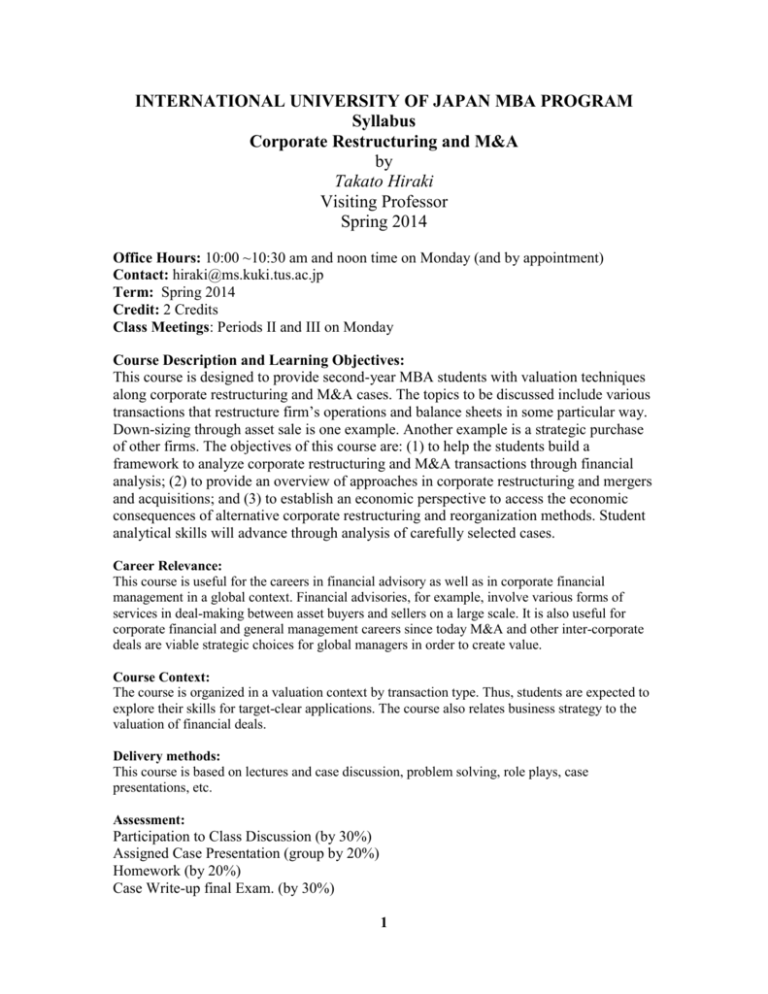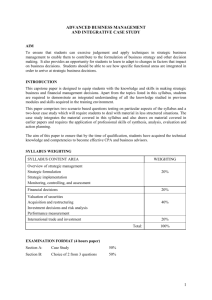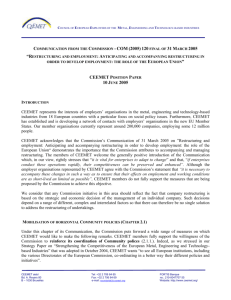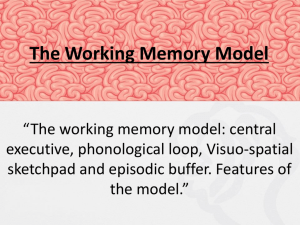
INTERNATIONAL UNIVERSITY OF JAPAN MBA PROGRAM
Syllabus
Corporate Restructuring and M&A
by
Takato Hiraki
Visiting Professor
Spring 2014
Office Hours: 10:00 ~10:30 am and noon time on Monday (and by appointment)
Contact: hiraki@ms.kuki.tus.ac.jp
Term: Spring 2014
Credit: 2 Credits
Class Meetings: Periods II and III on Monday
Course Description and Learning Objectives:
This course is designed to provide second-year MBA students with valuation techniques
along corporate restructuring and M&A cases. The topics to be discussed include various
transactions that restructure firm’s operations and balance sheets in some particular way.
Down-sizing through asset sale is one example. Another example is a strategic purchase
of other firms. The objectives of this course are: (1) to help the students build a
framework to analyze corporate restructuring and M&A transactions through financial
analysis; (2) to provide an overview of approaches in corporate restructuring and mergers
and acquisitions; and (3) to establish an economic perspective to access the economic
consequences of alternative corporate restructuring and reorganization methods. Student
analytical skills will advance through analysis of carefully selected cases.
Career Relevance:
This course is useful for the careers in financial advisory as well as in corporate financial
management in a global context. Financial advisories, for example, involve various forms of
services in deal-making between asset buyers and sellers on a large scale. It is also useful for
corporate financial and general management careers since today M&A and other inter-corporate
deals are viable strategic choices for global managers in order to create value.
Course Context:
The course is organized in a valuation context by transaction type. Thus, students are expected to
explore their skills for target-clear applications. The course also relates business strategy to the
valuation of financial deals.
Delivery methods:
This course is based on lectures and case discussion, problem solving, role plays, case
presentations, etc.
Assessment:
Participation to Class Discussion (by 30%)
Assigned Case Presentation (group by 20%)
Homework (by 20%)
Case Write-up final Exam. (by 30%)
1
Recommended textbook(s) and other resources:
The following reserved books are recommended for students to read before attending each class:
1) Weston, Mitchell and Mulherin (WMM), Takeovers, Restructuring, and Corporate
Governance, Fourth Edition (International Edition), Pearson (Prentice Hall), 2004. (The 5th
edition has not been available until July 2014.)
2) D.M. DePamphilis (D), Mergers, Acquisitions, and Other Restructuring Activities, Fifth
Edition, 2010, Academic Press.
3) Brealey, Myers and Allen (BMA), Principles of Corporate Finance, Eleventh (or
earlier) Edition (Global Edition), 2013, MacGraw-Hill. (PART X: MERGERS,
CORPORATE CONTROL, AND GOVERNANCE) .
Copies of HBS Cases in Reading Packet.
Tentative outline:
Weekly Scheduled Topics
Week
Week 1
Topics
Brief Introduction and Overview
What Are Corporate Restructuring and M&A?
Required Reading:
D: Part I. 1. (3-46)
WMM: PART IV, 288-328 & Chapter 16 (406-445)
BMA Part X
(Most likely, basic valuation concepts of Week 2 will be discussed after
completing the introduction and overview.)
Week 2
Valuation for Asset Claim Transactions
Multiples, DCF (WACC, APV and DCF) and Real Options
WMM: PART III, 232-256 and Appendices A & B in Chapter 16, and D:
Chapter 7 for Valuation Overview
The uValue Companion: Handbook on Valuation (saved)
T.A. Luehrman, “Investment Opportunities as Real Options: Getting Started on
the Numbers,” Harvard Business Review, July-Aug. 1998
Week 3
Equity Carve-outs
Equity Carve-outs vs. Sell-offs
Required Reading:
WMM: PART IV, p. 288-328 and JKS’s related parts
D: Chapter 15 (“Equity Carve-Outs”)
2
J.W. Allen, “Capital Markets and Corporate Structure: The Equity Carve-outs
of Thermo Electron,” Journal of Financial Economics (1998).
Case: “Eskimo Pie”
Case Study Questions:
1.
Why did Nestle offer to buy Eskimo Pie? Is the value of Eskimo Pie for
Nestle higher than the standalone value?
2.
As an advisor for Reynolds, which strategy would you recommend
between the sale to Nestle and the alternatively proposed IPO?
1.
2.
Week 4
Long-run Consequence of Equity Carve-outs
Case: “NEC Electronics”
Case Study Questions:
Why do shares in NEC Electronics, a publicly listed subsidiary of
Japanese conglomerate NEC, trade at a discount to their fundamental
value?
Can Perry Capital, a U.S. hedge fund, restructure this subsidiary and
generate significant returns? What are obstacles to realize significant
returns for Perry?
Spin-off Transactions:
Case: Humana Inc. (HBS Case)
Case Study Questions:
1.
2.
3.
4.
Do you think Humana’s problems were serious enough to warrant some
form of restructuring?
How much extra value would be created by separating the hospital and
health plan segments through a spin-off? What are the sources of this
additional value, and how should the spin-off be structured for Humana
to realize maximum benefits from the spin-off?
Kaiser Permanente has employed an integrated strategy of owning both
hospitals and health plans for many years, and some would argue with
great success. This suggests that Humana’s problems are not the fault of
its integrated strategy per se, and that breaking apart the hospital and
health plan segments may not enhance shareholder value in the long run.
Do you agree or disagree?
Do any of the other options considered by management represent a more
sensible solution to Humana’s problems than the spin-off?
Required Readings:
WMM: PART IV, p. 288-328 (especially, p. AT&T case in Table 11.3 on p. 291)
and JSK’s related parts
Related question: AT&A case: How do you compare AT&A’s breaking-up
transactions with NTT’s movements towards more integrated organizational
form?
Week 5
Tracking Stocks:
(Targeted Stocks)
3
Case: USX Corporation (HBS Case)
Case Study Questions:
1.
2.
3.
4.
5.
6.
In 1986, then-chairman and CEO David Roderick described USX as
possibly one of “the most restructured corporations in America.” Even so,
Carl Icahn believed that further restructuring of the company was still
necessary. In late 1990, what operating and/or strategic problems, if any,
do USX’s two main businesses still face that would warrant some form of
additional restructuring?
Do you think there is any merit in Carl Icahn’s claim that problems in
USX’s steel business are depressing the value of its energy business? As a
USX stockholder, how credible a spokesperson do you consider Icahn to
be on this issue?
Which restructuring option — Icahn’s spinoff proposal or the company’s
targeted stock proposal — will create the most value for shareholders? For
creditors? For the firm’s other stakeholders?
For what kind of companies is targeted stock most appropriate? Least
appropriate?
Should the company seriously consider any other options besides doing a
spinoff or issuing targeted stock?
If the company decides to go ahead with the targeted stock issue, what
specific provisions or features should the stock include to ensure maximum
value creation? How closely would you model USX’s targeted stock on
GM’s alphabet stock?
Required Reading:
D: Chapter 15 (“Tracking, Targeted, and Letter Stocks” and see more recent
transactions among IT firms)
WMM: PART IV, p. 288-328 (especially, p. AT&T case in Table 11.3 on p. 291)
JSK’s related pages.
D. Logue, J. Seward and J.P Walsh, “Rearranging Residual Claims: A Case for
Targeted Stock,” (Financial Management, Spring 1996).
Harper, J. and Madur, J., “Source of Hidden Value and Risk in Tracking Stock,”
(Financial Management, 31 (3) 91-109, 2002)
Week 6
Leverage and Management Buy-Outs
Classical MBO Case: RJR Nabisco
1.
What was the value of RJR Nabisco under:
a) pre-bid operating strategy?
b) Management Group’s operating strategy?
c) KKR’s operating strategy?
2.
What accounts for any difference in the value of the three
operating plans?
3.
Evaluate the Special Committee’s use of an auction of RJR
Nabisco?
4.
Which bid should the Special Committee select, if any? What
other actions should the Special Committee take?
4
Required Reading:
WMM: Chapter 16 (especially “Valuation of LBO,” p. 431-433 )
JSK’s related parts
D: Chapter 13 (understand buyouts in a more general context and see
how special LBO and MBO are.)
Week 7
Hostile Takeovers in Japan
Case: Oji Paper Manufacturing vs. Hokuetsu Paper Mill (The case will be
separately distributed)
Required Reading:
WMM: Chapter 1 (especially p. 10-11);
D: Chapter 16
Questions:
1. How do you evaluate the business (value creation) and tender offer
strategy provide by the Oji management?
2. How do you evaluate the explanation made the Hokuetsu
management to decline the merger proposal of Oji?
3. How do you evaluate the overall result from an economic perspective
and other viewpoints?
Week 8
Hostile Takeovers in Global Context
Case: Roche’s Acquisition of Genentech
Case Questions:
1. As of June 2008, what is the value of the synergies Roche anticipates from a
merger with Genentech? (Assess the value of synergies per share of
Genentech using a 9% weighted average cost of capital in your analysis.)
2. Based on DCF valuation techniques, what range of values is reasonable for
Genentech as a stand-alone company in June 2008? (Please exclude
synergies from your valuation an use a 9% weighted average cost of capital.
You can assume that as of the end of June 2008, Genentech held
approximately $7 billion in cash, which included investments and securities
that were not needed in its daily operations. Note that Exhibit 10 is a good
starting point for this analysis.)
3. What does the analysis of comparable companies (Exhibits 12, 13, and 14)
indicate about Genentech value within the range established in question 2
above?
Required Reading:
WMM: PART V (especially, Chapter 17) & See: Case 17.3 on p. 480-4829
D: Chapter 17 (Cross-Border M&A)
Week 9
M&A and Real Options
M&A and Real Options in Assets Traded
Case: MW Petroleum (A)
5
Case Questions:
1. What is the rationale of the deal? Why should we perform valuations?
2. What are the methods you will use to perform valuation and what are their
values?
3. What are the options, and what are the values of the Strike, Underlying etc.?
4. How does Real Option Analysis differ from DCF or APV analysis?
5. How would you estimate the volatility parameter?
Required Reading:
T.A. Luehrman, “Investment Opportunities as Real Options: Getting Started
on the Numbers,” Harvard Business Review, July-Aug. 1998,
WMM: Chapters 9 (especially, p. 238-243) and 22 (especially, p. 646-648)
D: Chapter 8 (p. 299-311)
Week 10
M&A Environment in Japan
Reorganization / Turnaround Management
Case: The Restructuring of Daiei
(Case questions will be given in a separate form subsequently)
Required Reading:
IUJ-GIIM Project “AEON's Acquisition of Daiei"
Optional Reading:
Inoue, K. , S. Nara and T. Yamazaki, 2013, “Ate Japanese Acquisitions
Efficient Investments,” Working paper.
Final Exam. Guidance (The case will be announced later towards the end
of the term.)
List of HBS Cases and Notes:
Case: “Eskimo Pie”
Case: “NEC Electronics”
Case: Humana Inc.
Case: USX Corporation
Case: RJR Nabisco
Case: Roche’s Acquisition of Genentech
Case: MW Petroleum (A)
Case: The Restructuring of Daiei
Note: "Introduction to Valuation Multiples." HBS Teaching Note 206-095 (by
Greenwood, Robin, and Lucy White).
6









